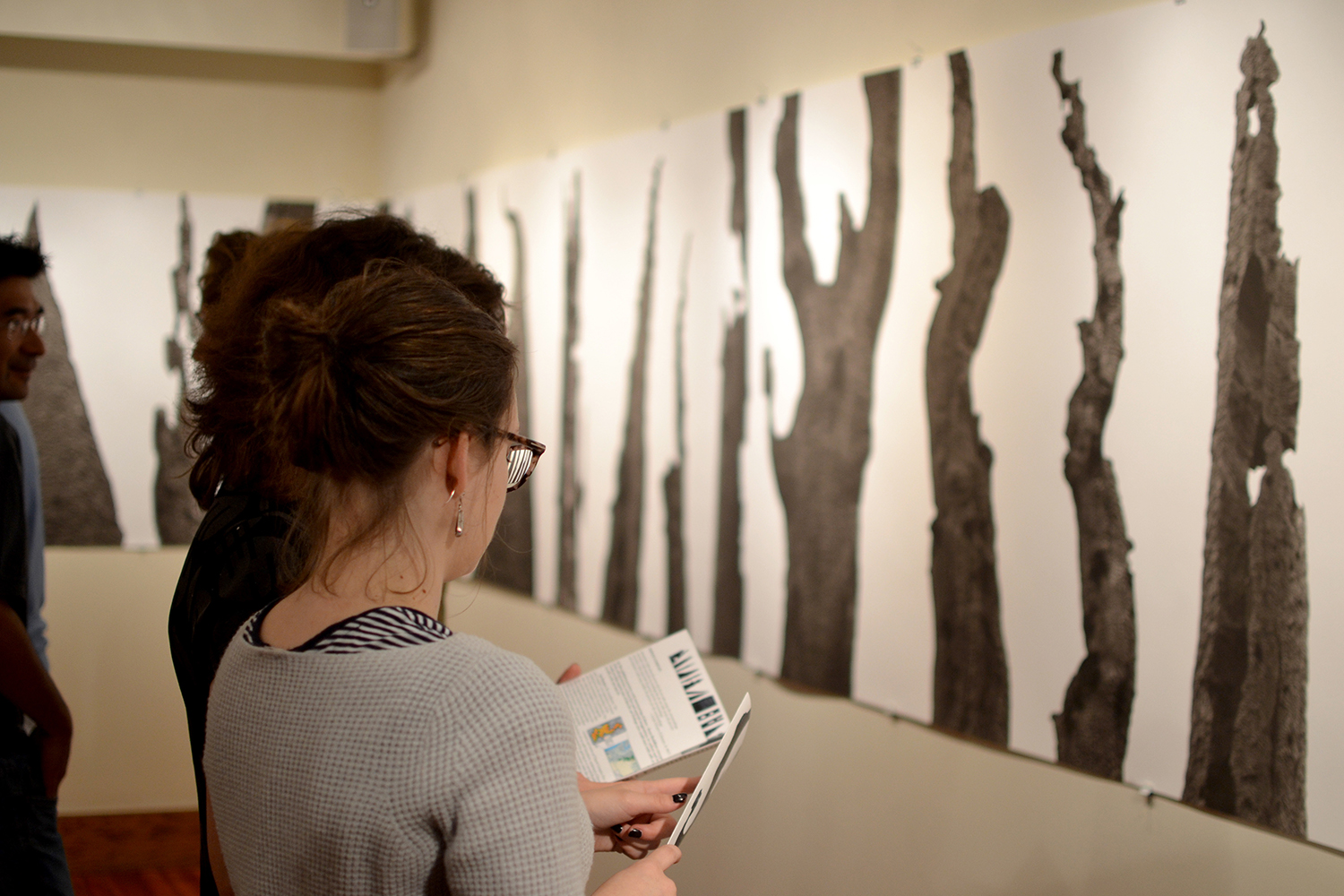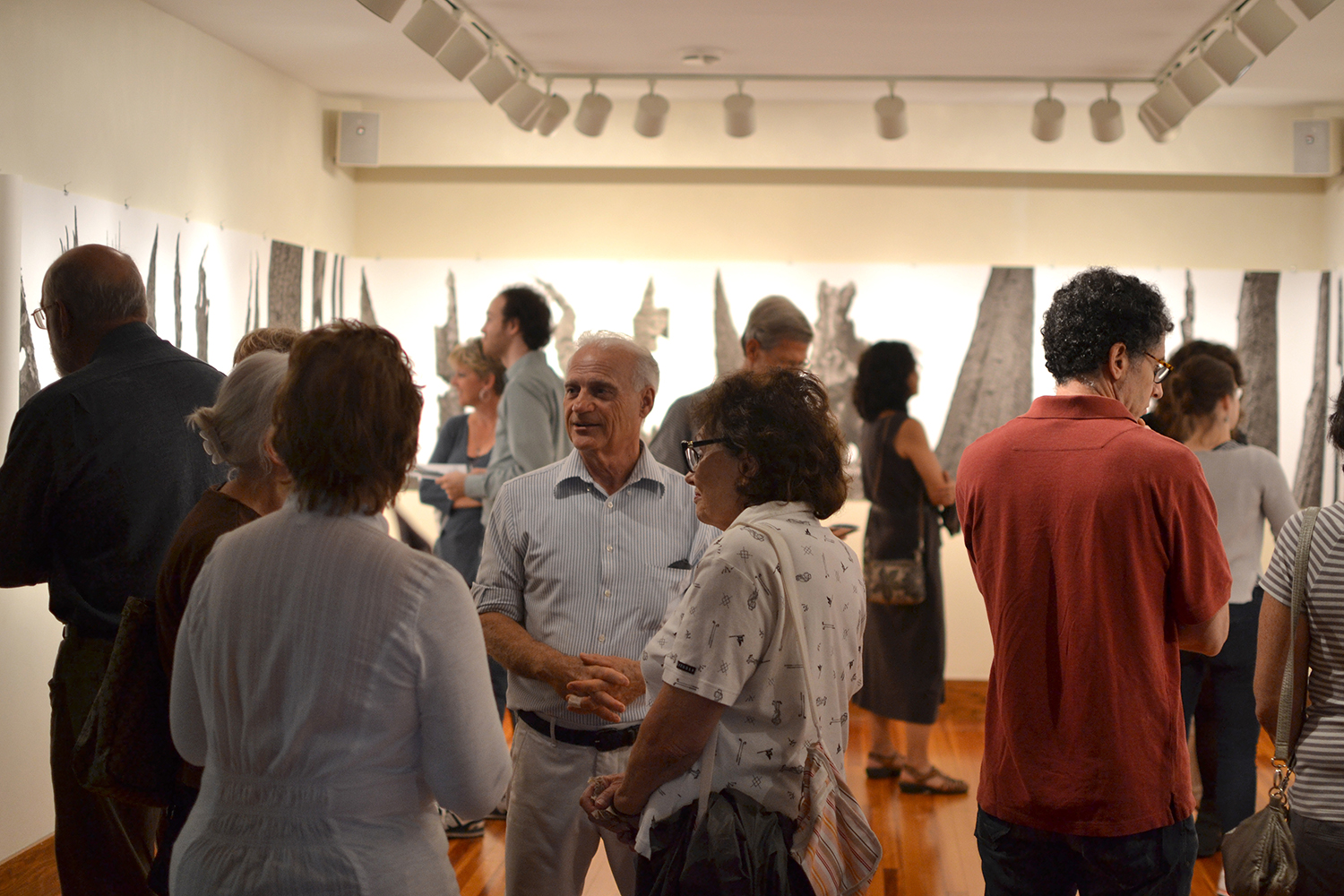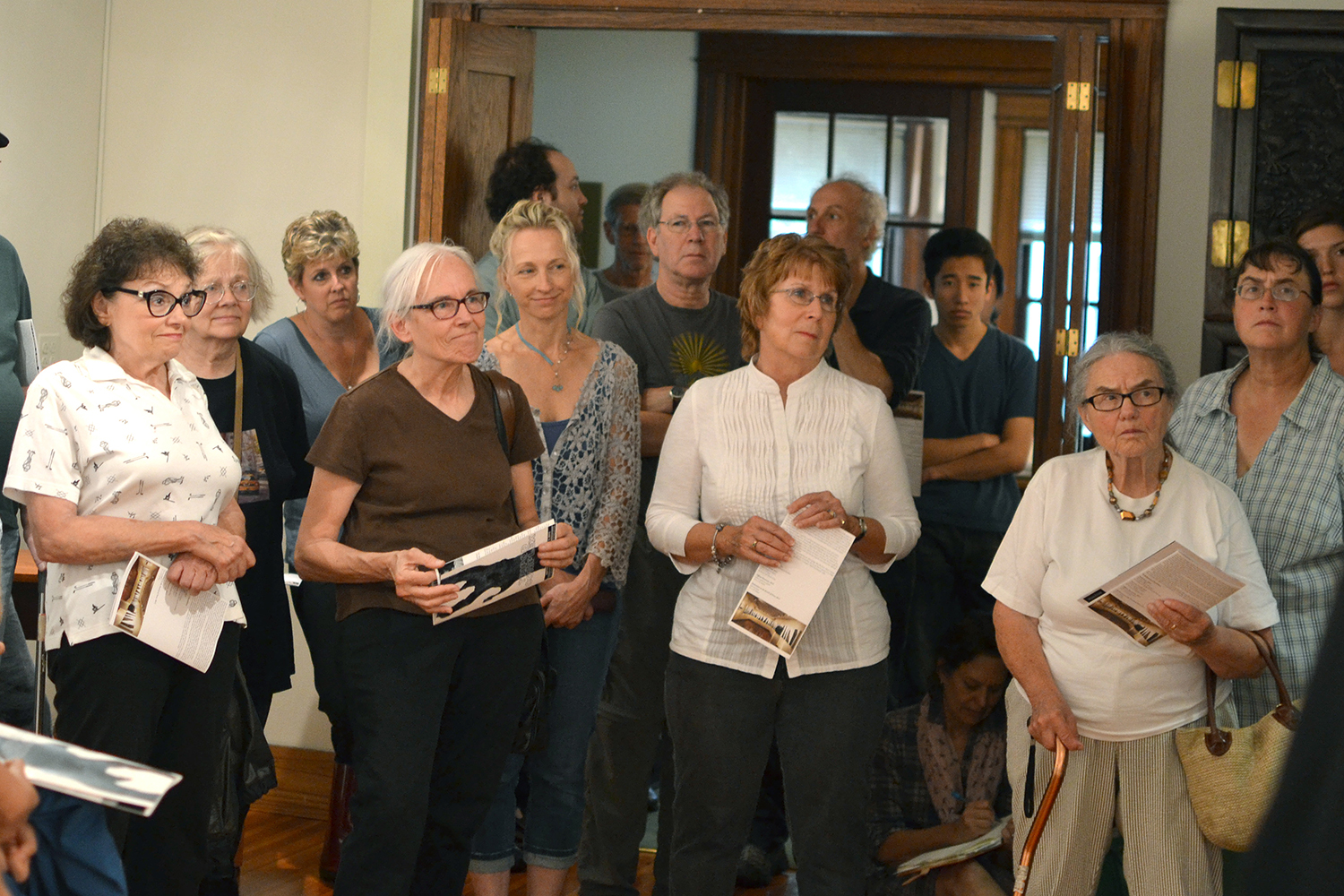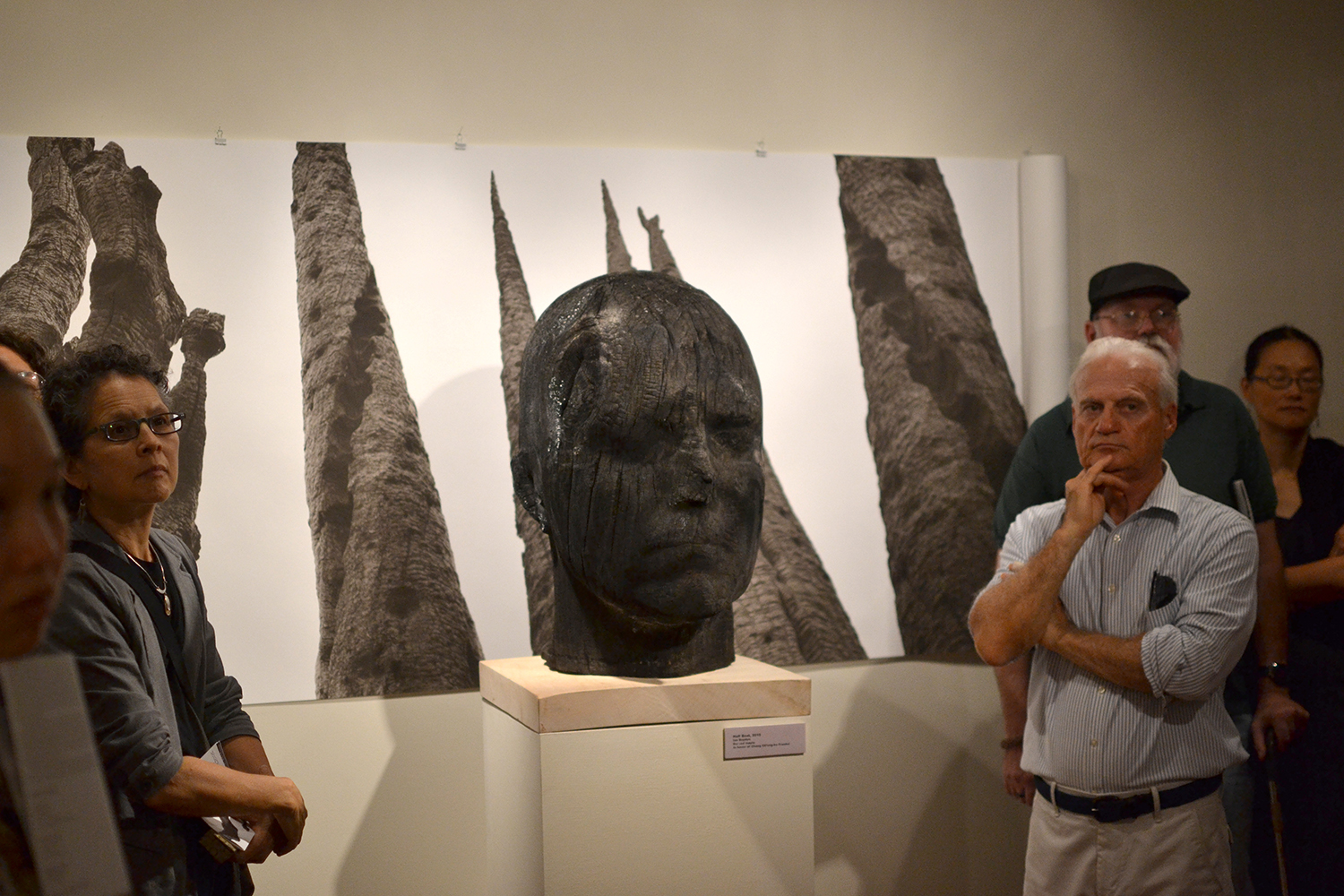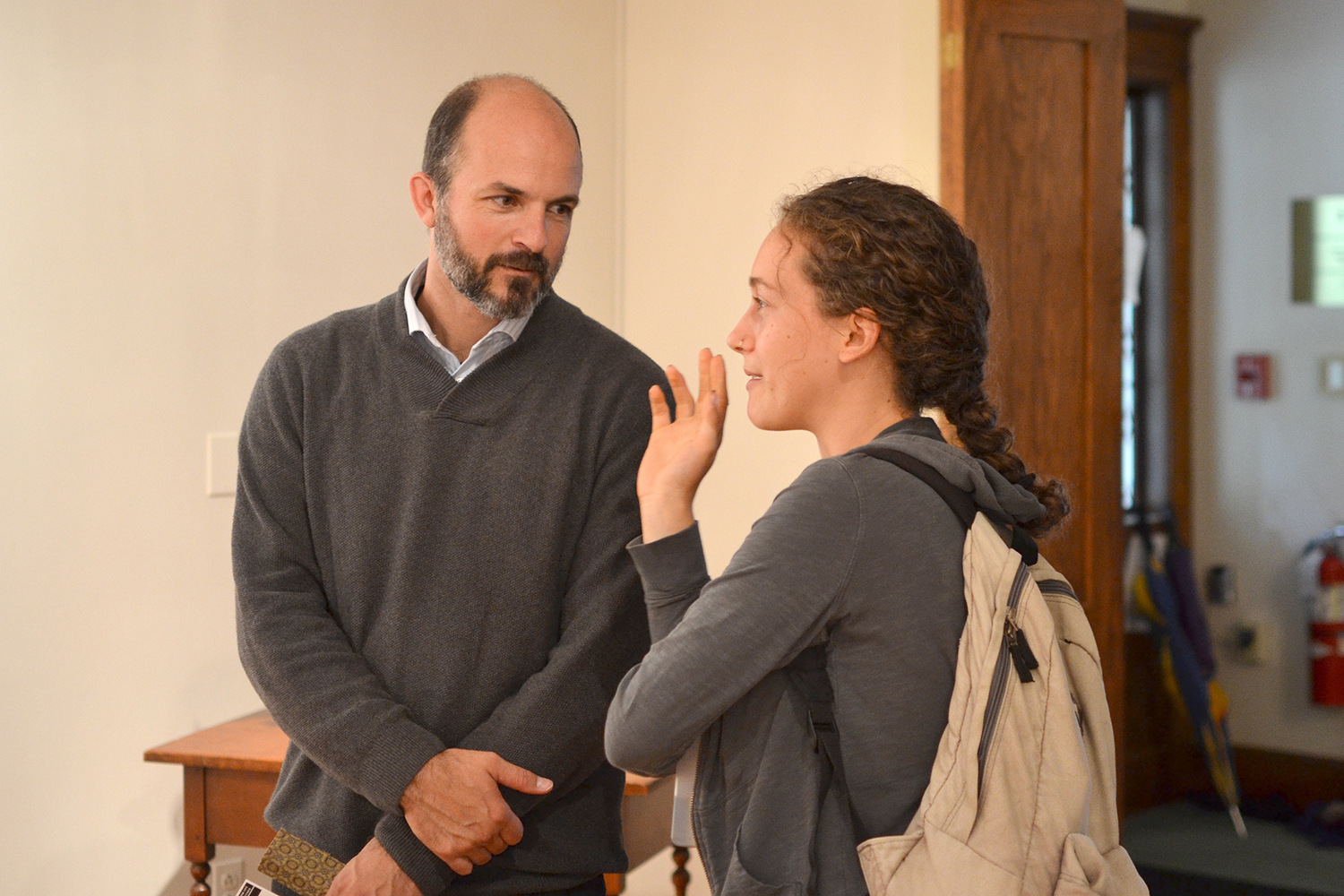Carbon Inks by Boyden ’95 on Display at Freeman Center for East Asian Studies
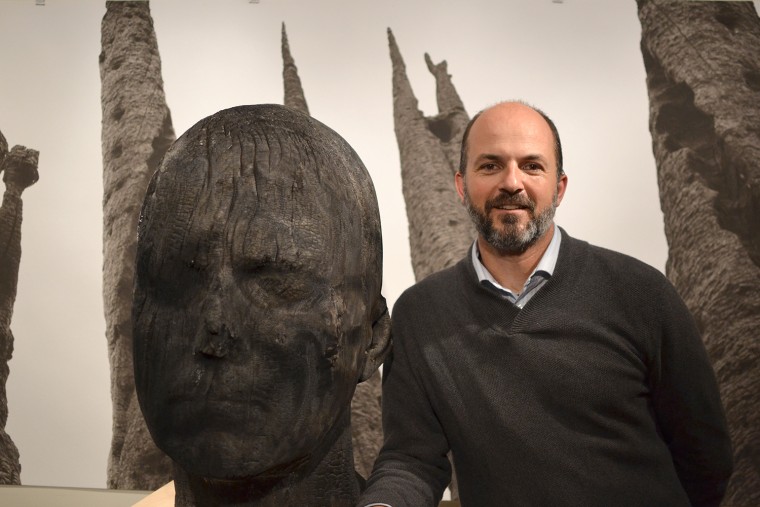
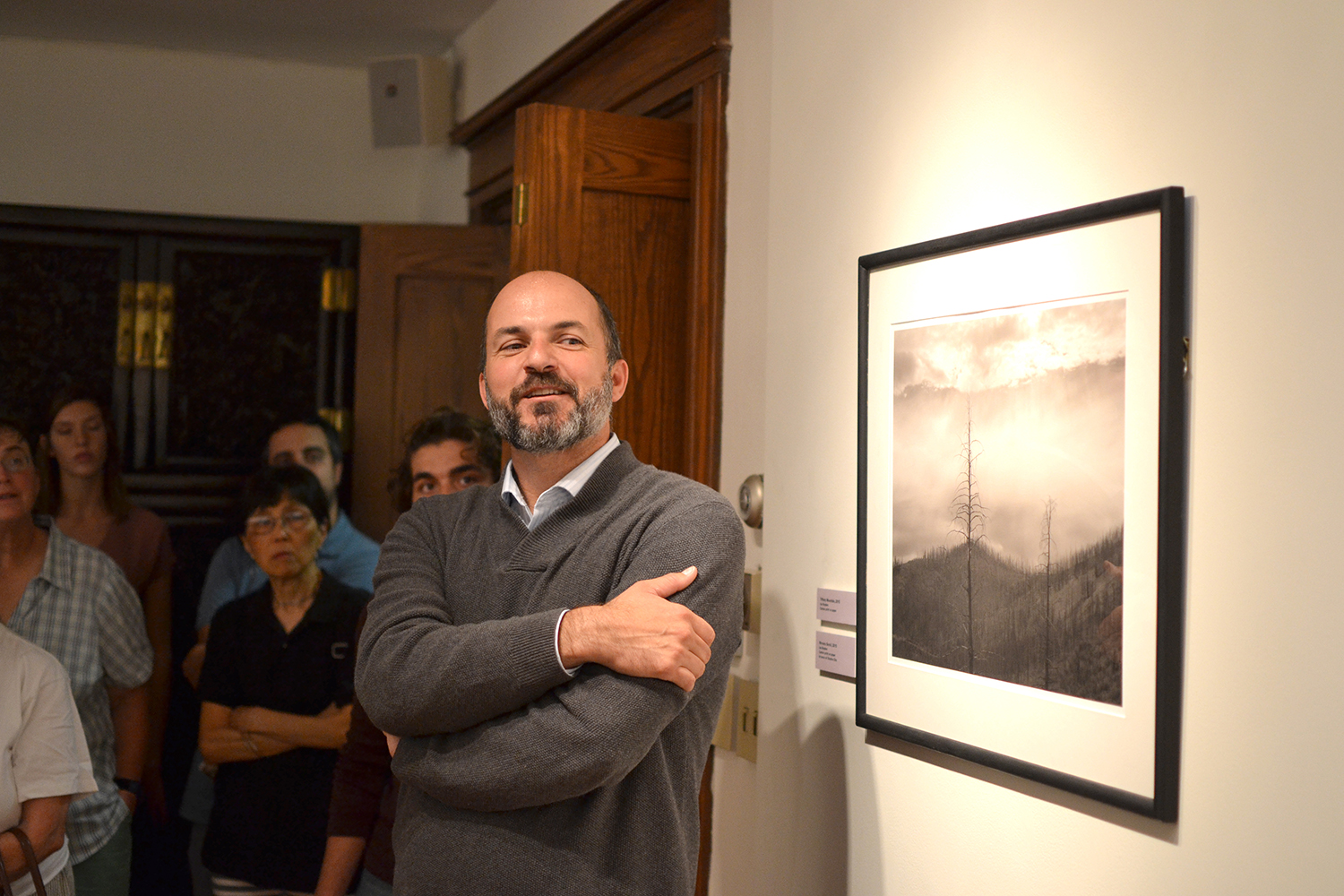
On Sept. 30, artist Ian Boyden ’95 spoke about his gallery exhibition, Tripod Complex, now on display at the Mansfield Freeman Center for East Asian Studies through Dec. 11. On Oct. 1, he followed up with an afternoon lecture titled “Nirvana: Carbon Inks, Burning Forests and the Buddhist Endgame.” Boyden, also a writer and director of the San Juan Islands Museum of Art, discussed how his exploration of the material and ecology of a forest fire offered him a path into further philosophical contemplations.
The exhibition, Tripod Complex, is named after a fire that burned a huge swath of the Okanogan National Forest in Washington State, and which Boyden visited while hiking along the Pacific Crest Trail. “The blackened trees looked like brushstrokes,” he explained.
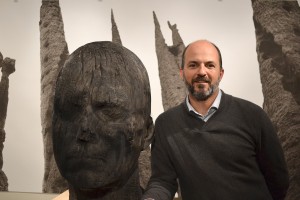
“Everything was black. The entire forest charred. Waiting. It had become ink. I stood inside this catastrophic Chinese landscape painting, transfixed by the musculature of the trees revealed and shaped by fire,” he said. “They had drawn themselves on the sky.”
He returned frequently to the area to photograph their stark beauty.
Also fascinated by the process of making his own ink, Boyden collected the carbon from the charred region to produce ink for ink jet printers. It was this product he used to then produce prints of his photographs of that fire-ravaged landscape. Tripod Complex features monumental scrolls of those blackened trees.
When he showed his work to Chinese friends, their comment surprised him: “Nirvana.” Wanting to understand why, Boyden decided to explore the philosophical resonance of that word as it applies to this work. He states:
“In Chinese, this word is composed of two characters: niè and pán. Together, they’re a phonetic rendering of the Sanskrit word nirvāṇa, but whoever translated it chose characters that had some visual significance that relates to Buddhist philosophy. Niè means to blacken, or black mud. And I liked that, I could see a relationship to the carbonized trees. In pán, you’ve got the circle of life, of the causation of things spinning around on top of a tree. And I thought that had some good resonance with my project as well—if the tree were to burn, the wheel would stop spinning. But there’s an alternate writing of pán, which is totally fascinating. It consists of two circles, one circle within the other. A friend of mine who’s interested in sacred geometry told me, ‘Oh, this is the self within the universe,’ which dovetails rather beautifully with my thoughts regarding the relationship between self and environment.”
To complete the collection, to include himself in his meditation on the burnt landscape and the lifecycle, Boyden carved a likeness of his own head from a block of green wood, and then set it on fire. “Half Boat” he calls it, in honor of one of his mentors who had a studio by that name. The other half of the boat, he explains, is what the viewer brings to the process of seeing and understanding the art.
Mansfield Freeman Center for East Asian Studies is open noon to 4 p.m. Tuesday through Sunday and is open to the public.
To see the complete transcript of an interview with Ian Boyden in conjunction with this exhibition, click here.
Photos and a video of the exhibit opening are below: (Video by New Media Lab. Photos by Will Barr ’18)
